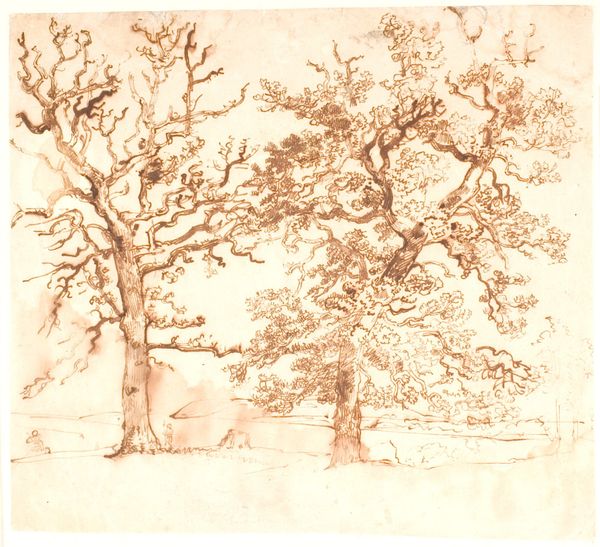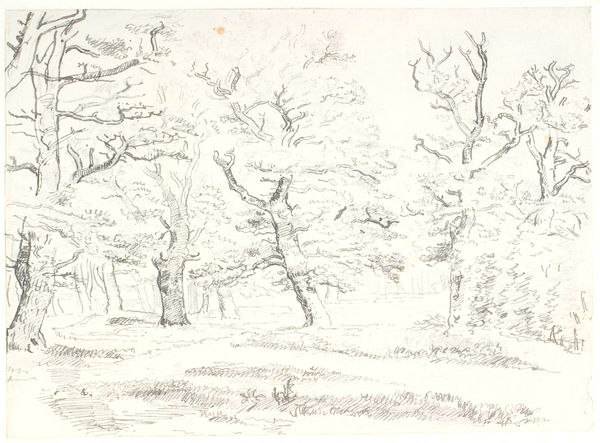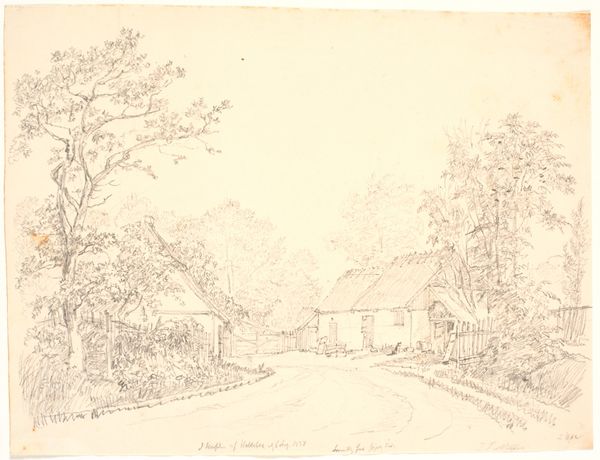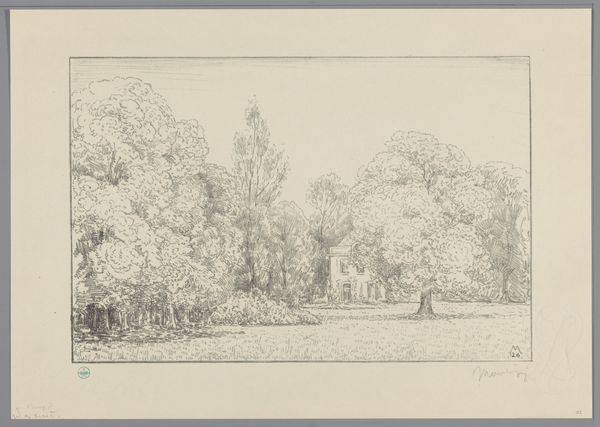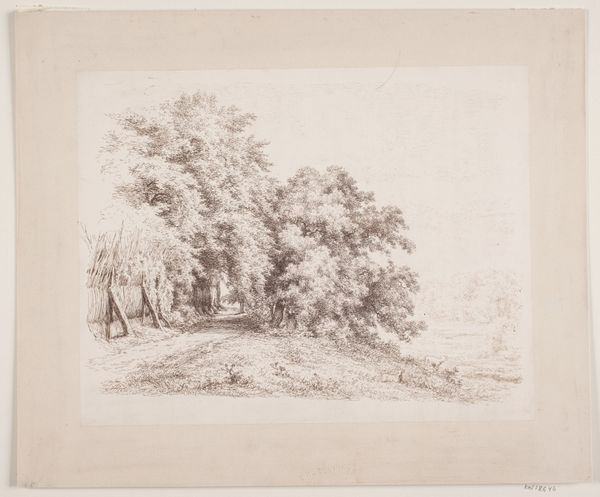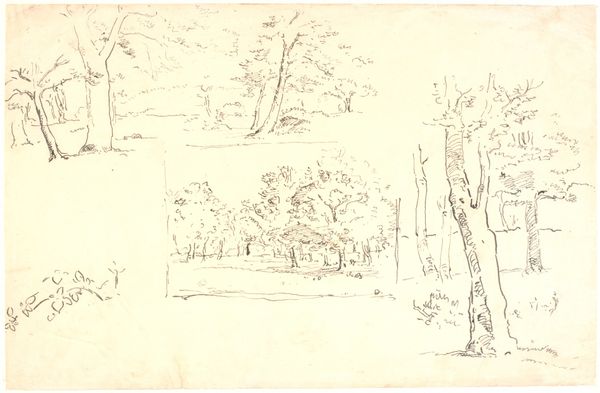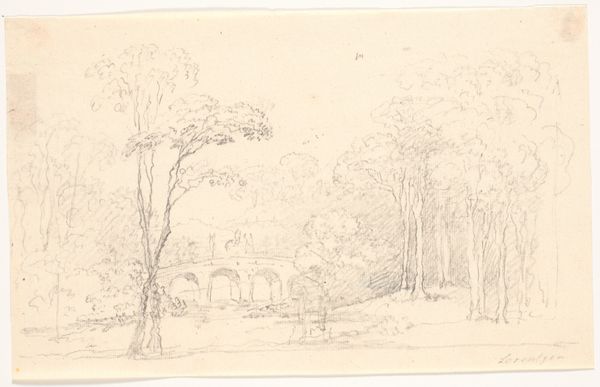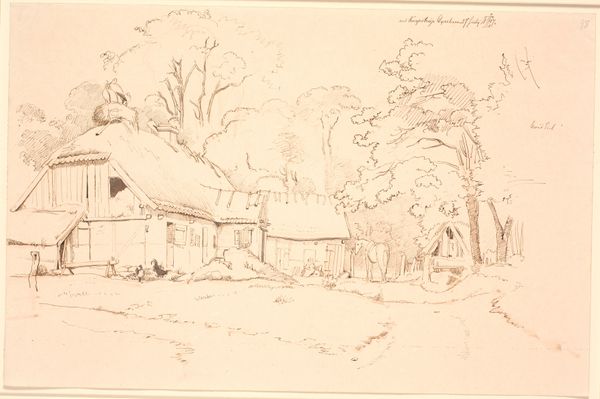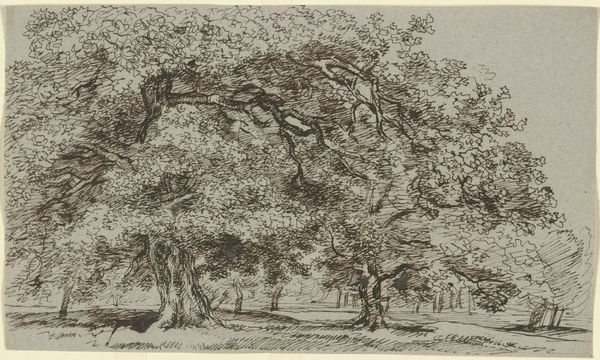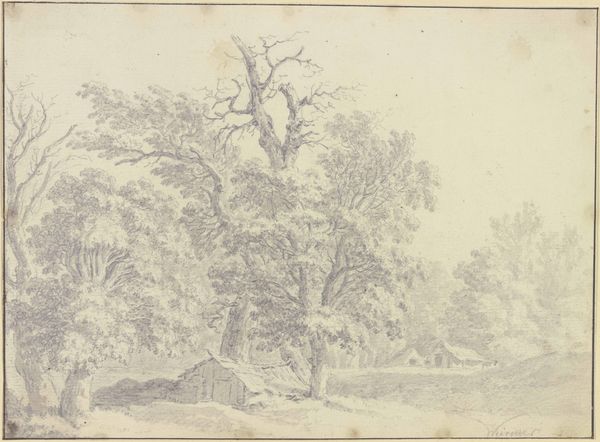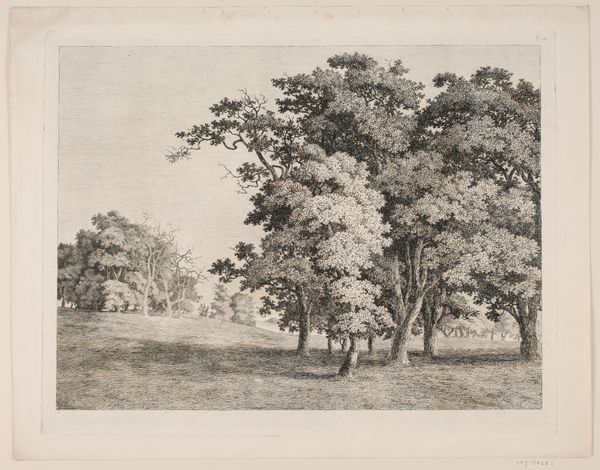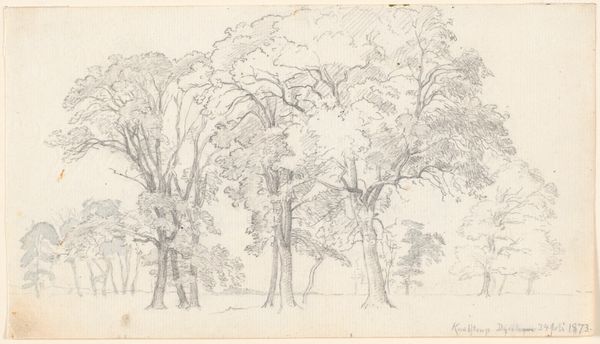
drawing, pencil
#
drawing
#
landscape
#
form
#
pencil
#
line
#
northern-renaissance
#
realism
Dimensions: 205 mm (height) x 237 mm (width) (bladmaal)
Curator: This is Dankvart Dreyer's pencil drawing, dating back to the 1840s, called 'Et skovløberhus, ved siden af et mægtigt egetræ', or 'A forester's house beside a mighty oak'. It resides here at the SMK. What catches your eye about it? Editor: It has this ghostly stillness to it. The delicate pencil work gives the whole scene a dreamlike quality, as if it’s a memory fading away. Curator: Dreyer’s landscape drawings were deeply influenced by his engagement with the rural and agrarian life. Look at the density of marks representing the trees, particularly the oak, contrasted with the simple geometry of the forester's house. We can read the paper itself as the land, the means to a productive economy in 19th Century Denmark. Editor: Absolutely, and that imposing oak is far from the kind of disposable commodity or material you describe. Its got such a palpable presence, hasn’t it? I can almost feel its rough bark beneath my fingertips, a beautiful counterpoint to the cottage's straight lines. It brings such soul and a little whimsy. Curator: But consider the role of the forester. His labour, his management of timber— the drawing positions the natural within a system of social and economic order. Even what we might call 'soul' serves a purpose. Editor: Perhaps. Or perhaps Dreyer was just as bewitched by nature as the rest of us. To render a tree with this much detail shows something akin to love, doesn’t it? A dialogue through labor perhaps? I get that feeling. Curator: A productive reading! Thinking about the material conditions—the role of drawing as both record and study, as preparation for painting, gives the “dialogue” you refer to a deeper art historical significance that brings more to the final paintings of the artist. Editor: Well, regardless of what he was trying to convey, he certainly captured the serene spirit of the landscape. It just whispers of old forests and quiet days. Thank you, Dankvart! Curator: Indeed. It’s in these unassuming drawings we locate much wider discussions on labor, and nature’s place in societal infrastructure that so powerfully shaped Dreyer’s broader artistic output. Thank you for taking this journey with me.
Comments
No comments
Be the first to comment and join the conversation on the ultimate creative platform.
